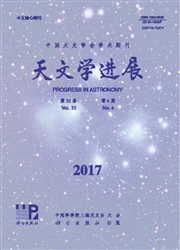

 中文摘要:
中文摘要:
优良站址的选择是射电望远镜完成既定科学目标并实现高效运行的重要保障。影响射电望远镜选址的主要因素包括电磁环境、水文、气象、地质条件、隔离性与可及性等。对于射电天文观测而言,来自宇宙天体的射电信号往往极其微弱,对望远镜系统及设备的灵敏度要求极高。然而,随着人类活动的不断加强,人们日常工作和生活中使用的电子通讯设备越来越多,无线电干扰源呈爆炸式涌现。在射电望远镜选址工作中,进行电磁环境监测,选择一个电磁环境良好的站址,对于射电望远镜实现常规观测运行、获取有效数据资料至关重要。同时,电磁环境监测结果也是射电望远镜接收机系统研制、站址电磁环境及无线电宁静区立法保护的重要依据。中阿天文学者和技术人员历时1年半完成了16个候选站址的初步勘察,并对优选出的3个主要候选站址进行了深入细致的电磁环境监测工作,获得了大量可靠数据。中阿双方依据电磁环境监测结果并结合各主要候选站址的水文、气象、地质及道路等条件,最终将位于Talacasto戈壁的3号候选站址确定为中阿CART射电望远镜的建设站点。
 英文摘要:
英文摘要:
The China-Argentina Radio Telescope(CART) with a diameter of 40-m will be located in the San Juan province of Argentina. CART is destined to be eventually equipped with L, S, C, X, Ku, K, Ka, and possibly also Q bands. Up to date, radio telescopes are usually designed with high sensitivities eligible for detecting extremely weak radio signals from astronomical objects. However, the explosive utilization of large mass of electronics and radio communication facilities in human activities has significantly ruined the working environment of radio telescopes. Therefore, the selection of a radio quiet site is one of the most critical issues for locating radio telescopes such as CART.Measurements of radio frequency interference(RFI) of the three primary candidate hosting sites for CART have been successfully carried out in May 2012 in the San Juan province. Both Site 3 at Talacasto and Site 6 at Leoncito are found to be radio quieter than Site 8, which is located in the vicinity of the San Juan city. However, based on a comprehensive assessment of the site conditions including RFI, accessibility, hydrological,geological and climatic feasibilities of all the candidate hosting sites, site 3 at Talacasto is finally taken as the hosting site for the CART telescope.
 同期刊论文项目
同期刊论文项目
 同项目期刊论文
同项目期刊论文
 EFFICIENT SELECTION AND CLASSIFICATION OF INFRARED EXCESS EMISSION STARS BASED ON AKARI AND 2MASS DA
EFFICIENT SELECTION AND CLASSIFICATION OF INFRARED EXCESS EMISSION STARS BASED ON AKARI AND 2MASS DA 期刊信息
期刊信息
